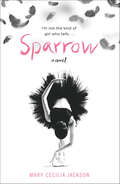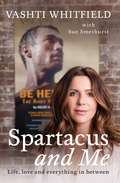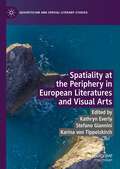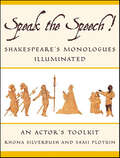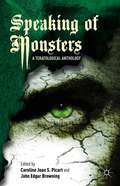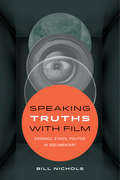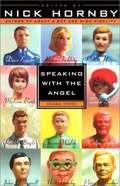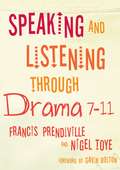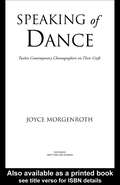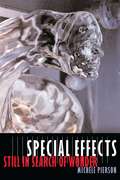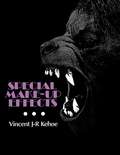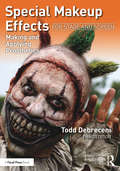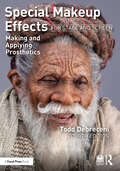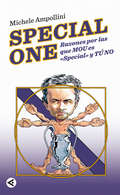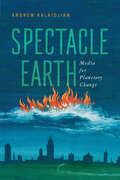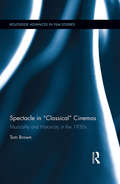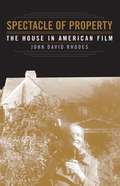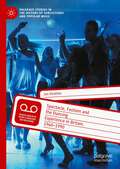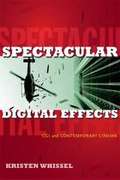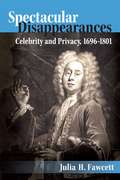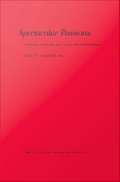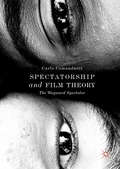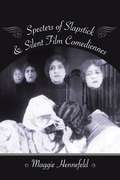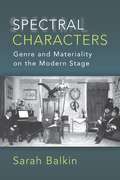- Table View
- List View
Sparrow: A Novel
by Mary Cecilia JacksonIn the tradition of Laurie Halse Anderson’s Speak, Mary Cecilia Jackson's devastating but hopeful YA debut is about a ballerina who finds the courage to confront the abuse that haunts her past and threatens her future.There are two kinds of people on the planet. Hunters and prey I thought I would be safe after my mother died. I thought I could stop searching for new places to hide. But you can’t escape what you are, what you’ve always been. My name is Savannah Darcy Rose. And I am still prey. Though Savannah Rose—“Sparrow” to her friends and family—is a gifted ballerina, her real talent is keeping secrets. Schooled in silence by her long-dead mother, Sparrow has always believed that her lifelong creed—“I’m not the kind of girl who tells”—will make her just like everyone else: Normal. Happy. Safe.But in the aftermath of a brutal assault by her seemingly perfect boyfriend Tristan, Sparrow must finally find the courage to confront the ghosts of her past, or lose herself forever….At the Publisher's request, this title is being sold without Digital Rights Management Software (DRM) applied.
Spartacus and Me: Life, love and everything in between
by Vashti WhitfieldA poignant and searingly honest memoir about love and life with Andy Whitfield When you meet the love of your life, the one person you want to spend the rest of your days with, what do you do when they're ripped away? Vashti and Andy Whitfield fitted together like the missing pieces of a perfect jigsaw. From the moment they met, they were inseparable. Vashti inspired Andy to fight fearlessly to achieve whatever he dreamed, and he gave her a love so deep that they both knew their life together would be nothing less than extraordinary. When Andy was talent-spotted on a Sydney beach, life changed forever. The shy engineer found his calling as an actor, landing the lead role in the hit Hollywood TV series Spartacus, while Vashti achieved her own dream, becoming a highly sought after executive coach. The arrival of their two beautiful children made their world complete. But then Andy was diagnosed with cancer. Miraculously he recovered and went back to his starring role . . . But as Andy fought gladiators in the ring, the cancer was waging its own war inside his body, and this time it wasn't going to be beaten. Despite the shocking inevitability of his illness, Andy and Vashti were determined to leave a meaningful legacy, and bravely chose to share their journey to the end in the award winning documentary Be Here Now. Now Vashti has rebuilt her life, and in this honest, heartfelt and at times hilariously moving story, she tells of life, love and overcoming loss - and the legacy we can all leave behind.
Spatiality at the Periphery in European Literatures and Visual Arts (Geocriticism and Spatial Literary Studies)
by Kathryn Everly Stefano Giannini Karina Von TippelskirchSpatiality at the Periphery in European Literatures and Visual Arts analyzes the impact migrations, both internal and external, have on Europe’s literary and visual representations in the nineteenth to twenty-first centuries. The volume aims to subvert a centripetal reading of European cultural production by including peripheral thinkers, writers, and visual artists operating in transcultural contexts. The essays highlight and investigate the fertile artistic discourses generated in the spatial peripheries outside of Europe or its inner peripheries. The volume addresses the need for geocritical readings that overcome the engrained dichotomy of centers-peripheries. By doing so, the book brings a more nuanced approach to national literatures and proposes the idea of “contact zones of imaginative interaction”.
Speak the Speech!: Shakespeare's Monologues Illuminated: An Actor's Toolkit
by Rhona Silverbush Sami PlotkinThe most comprehensive sourcebook of Shakespeare's monologues ever available in one volume.A detailed guide to approaching Shakespearean text, Speak the Speech! contains everything an actor needs to select and prepare a Shakespeare monologue for classwork, auditions, or performance. Included herein are over 150 monologues. Each one is placed in context with a brief introduction, is carefully punctuated in the manner that best illustrates its meaning, and is painstakingly and thoroughly annotated. Each is also accompanied by commentary that will spark the actor's imagination by exploring how the interrelationship of meter and the choice of words and sounds yields clues to character and performance. And throughout the book sidebars relate historical, topical, technical, and other useful and entertaining information relevant to the text. In addition, the authors include an overview of poetic and rhetorical elements, brief synopses of all the plays, and a comprehensive index along with other guidelines that will help readers locate the perfect monologue for their needs.More than just an actor's toolkit, Speak the Speech! is also an entertaining resource that will help demystify Shakespeare's language for the student and theater lover alike.
Speaking Of Monsters
by John Edgar Browning Caroline Joan S. PicartDespite its apparently monolithic definition, 'teratology' (from the Greek word teras, meaning 'monster, ' and the Latin logy, which is derived from the Greek logia, meaning 'a speaking, discourse, treatise, doctrine, theory, science') seems infinitely malleable, flourishing in various rhetorical environments. Teratologies are more than a bestiary: a catalogue of 'freaks' designed to celebrate the 'normal. ' Rather, teratologies illustrate how humor, horror, fantasy and the 'real' cross-fertilize each other, resulting in the possibility of new worlds, ethics, and narratives, emerging. As a general anthology of teratologies, this book simply maps what, in many ways, has already been occurring across several fields, as it tracks the expansion of this term, creating lacunae that form connections across multiple interpretive communities. It is a cross section of how "monster narratives" intersect with "outsider" positions, from different perspectives - such as those of literary critics, film critics, criminologists, law professors, historians, philosophers - and looks into various strategies of destabilizing normative binaries.
Speaking Truths with Film: Evidence, Ethics, Politics in Documentary
by Bill NicholsHow do issues of form and content shape the documentary film? What role does visual evidence play in relation to a documentary's arguments about the world we live in? In what ways do documentaries abide by or subvert ethical expectations? Are mockumentaries a form of subversion? Can the documentary be an aesthetic experience and at the same time have political or social impact? And how can such impacts be empirically measured? Pioneering film scholar Bill Nichols investigates the ways documentaries strive for accuracy and truthfulness and simultaneously fabricate a form that shapes reality. Such films may rely on reenactment to re-create the past, storytelling to provide satisfying narratives, and rhetorical figures such as metaphor or devices such as irony to make a point. Documentaries are truly a fiction unlike any other. With clarity and passion, Nichols offers incisive commentaries on the basic questions of documentary's distinct relationship to the reality it represents, as well as close readings of provocative documentaries from this form's earliest days to its most recent incarnations. These essays offer a definitive account of what makes documentary film such a vital part of our cultural landscape.
Speaking With The Angel
by Nick HornbyNick Hornby. . . Giles Smith. . . Helen Fielding. . . Roddy Doyle. . . Irvine Welsh. . . Zadie Smith. . . Dave Eggers. . . Robert Harris. . . Melissa Bank. . . Patrick Marber. . . Colin Firth. . . John O'Farrell Compiled by bestselling author Nick Hornby and featuring brand new stories from the hottest writers on both sides of the Atlantic, Speaking with the Angel is a fresh and funny collection that is sure to be the literary anthology of the year. Here is a book that was inspired by a very special boy and a very special school. Some money from each copy of Speaking with the Angel sold will benefit autism education charities around the world, including The Treehouse School in London, where Nick's son Danny is a student, and the New York Child Learning Institute here in the States. This project is truly a labor of love for Hornby and the other writers involved, many of whom are Nick's friends. These original first-person narratives come from the most exciting voices in fiction. Melissa Bank gives readers a glimpse into the mind of a modern New Yorker whose still-new relationship is a constant source of surprise in "The Wonder Spot. " In Zadie Smith's "I'm the Only One," a young man recalls his strained relationship with his diva-esque sister. Dave Egger's "After I Was Thrown in the River and Before I Drowned," is told from the viewpoint of an unfortunate pit bull. Helen Fielding offers up a new twist on I've fallen and I can't get up in "Luckybitch. " And in Nick Hornby's "NippleJesus," a bruiser finds out that guarding modern art is far more hazardous than controlling the velvet ropes at a nightclub. Speaking with the Angel also includes stories from Roddy Doyle, Irvine Welsh, Colin Firth, John O'Farrell, Robert Harris, Patrick Marber, and Giles Smith. Twelve completely new stories, written by twelve undeniably imaginative voices. Speaking with the Angel is at turns clever, outrageous, witty, edgy, tender, and wicked. This is what they meant by original.
Speaking and Listening through Drama 7-11
by Nigel Toye Mr Francis Prendiville'This book is special. It proposes a style of drama that liberates teachers and children from traditional dialogues...The dramas, each linked to a literacy text or wider theme, are amazing...I would recommend buying this. It challenges, but rewards with a new level of classroom dialogue' - Literacy Time 'This new book for teachers is timely and full of good ideas. It demonstrates the value of drama as a means of achieving education that stimulates creative and critical thinking while also engaging the emotions' - Teaching Thinking & Creativity Showing teachers how to use drama to promote speaking and listening for pupils, including those who find learning difficult, this book describes, analyses and teaches how to use role play effectively and looks at how to generate a productive dialogue between teachers and pupils that is both powerful and enabling. The authors present innovative methods for teaching across the curriculum which are genuinely inclusive and can help to motivate reluctant learners. The 'how to' section of the book describes a range of strategies and approaches: o how to begin with 'teacher in role' o how to begin planning drama o how to generate quality speaking and listening o how to use drama for inclusion and citizenship o how to generate empathy in drama o how to link history and drama o how to begin using assessment of speaking and listening (and other English skills) through drama The second section includes full lesson plans that have been tried and tested with pupils, complete with detailed guidance on how to structure the work and how to play the teacher roles. Each is linked to literacy, the wider curriculum, PSHE and citizenship. The book is a valuable resource for primary teachers in training and in practice.
Speaking of Dance: Twelve Contemporary Choreographers on Their Craft
by Joyce MorgenrothSpeaking of Dance: Twelve Contemporary Choreographers on Their Craft delves into the choreographic processes of some of America's most engaging and revolutionary dancemakers. Based on personal interviews, the book's narratives reveal the methods and quests of, among others, Merce Cunningham, Meredith Monk, Bill T. Jones, Trisha Brown, and Mark Morris. Morgenroth shows how the ideas, craft, and passion that go into their work have led these choreographers to disrupt known forms and expectations. The history of dance in the making is revealed through the stories of these intelligent, articulate, and witty dance masters.
Speaking of Pianists... (3rd edition)
by Abram ChasinsBiographies of many noted pianists, and essays on interpretation, concert management, recording, and the formidable demands of a career as a concert pianist.
Special Effects: Still in Search of Wonder (Film and Culture Series)
by Michele PiersonDesigned to trick the eye and stimulate the imagination, special effects have changed the way we look at films and the worlds created in them. Computer-generated imagery (CGI), as seen in Hollywood blockbusters like Star Wars, Terminator 2, Jurassic Park, Independence Day, Men in Black, and The Matrix, is just the latest advance in the evolution of special effects. Even as special effects have been marveled at by millions, this is the first investigation of their broader cultural reception. Moving from an exploration of nineteenth-century popular science and magic to the Hollywood science fiction cinema of our time, Special Effects examines the history, advancements, and connoisseurship of special effects, asking what makes certain types of cinematic effects special, why this matters, and for whom. Michele Pierson shows how popular science magazines, genre filmzines, and computer lifestyle magazines have articulated an aesthetic criticism of this emerging art form and have helped shape how these hugely popular on-screen technological wonders have been viewed by moviegoers.
Special Make-Up Effects
by Vincent KehoeSpecial Make-Up Effects concentrates on the genre of horror characters and other special creations (fantasy, sci-fi, etc), giving tips about the materials, techniques, and 'tricks of the trade' necessary to create unique make-up effects. This focused volume is a scaled-down version of Vincent Kehoe's encyclopedic reference for professional make-up artists. It contains new segments and photographs. This book shows how many of cinema's most famous characters and effects were developed. It gives students and make-up artists the techniques they need to perform their own magic.
Special Makeup Effects for Stage and Screen: Making and Applying Prosthetics
by Todd DebreceniWith this new edition of Special Makeup Effects for Stage and Screen, author Todd Debreceni presents the latest techniques and special effects in what has become an industry "bible." In addition to genre-specific considerations, Debreceni covers the latest gear you will need and details how to maintain your kit, how to take care of the actor's skin, how to airbrush for HD, and much more. With in-depth, step-by-step tutorials, learn how to sculpt and mold your own makeup prosthetics, focusing on human anatomy to create the most realistic effects. This new and expanded edition features updated information on lifecasting, prosthetics made using 3D printing, advanced airbrushing techniques, new artist profiles, and includes updated images and illustrations throughout. A companion website contains artist profiles that showcase some of the world’s top makeup effects artists, including Steve Wang, Ve Neill, Matthew W. Mungle, Miles Teves, Jordu Schell, and many others. Also included are detailed makeup tutorials led by experts in the field, such as Maddie Singer and Toby Sells.
Special Makeup Effects for Stage and Screen: Making and Applying Prosthetics
by Todd DebreceniWith this new edition of Special Makeup Effects for Stage and Screen, author Todd Debreceni presents the latest techniques and special effects in what has become an industry "bible." In addition to genre-specific considerations, Debreceni covers the latest gear you will need and details how to maintain your kit, how to take care of the actor's skin, how to airbrush for HD, and much more. With in-depth, step-by-step tutorials, learn how to sculpt and mold your own makeup prosthetics, focusing on human anatomy to create the most realistic effects. This new and expanded edition features updated information on lifecasting, prosthetics made using 3D printing, advanced airbrushing techniques, and new artist profiles, and includes updated images and illustrations throughout. A companion website contains artist profiles that showcase some of the world’s top makeup effects artists, including Ve Neill, Matthew W. Mungle, and many others. Also included are detailed tutorials led by experts in the field, such as Matthew Mungle, Adrian Rigby, Stuart Bray, and of course, the author himself.
Special One: Razones por las que Mou es Special y tú no
by Michelle AmpolliniRazones por las que Mou es Special y tú no... Disfruta con las anécdotas más divertidas y desconocidas del entrenador más especial del mundo. Lo nunca dicho sobre el Special one: «Special one está muy bien». Woody Allen «Soy un humilde pastor en la viña del Special one». Benedicto XVI «El Santo Grial es una copa, así que dejad de buscarla porque la habrá ganado el Special one». Dan Brown ¿Te has preguntado alguna vez por qué Mou es «Special» y tú no? Descubre todo lo que se podría decir del entrenador de moda, de sus entrevistas más polémicas y de su actitud ante la vida en Special one, un libro desternillante e irónico que recuerda a las famosas frases de Chuck Norris o a los tweets de Arturo Pérez-Reverte y con el que no podrás parar de reír.
Spectacle Earth: Media for Planetary Change (Cultural Frames, Framing Culture)
by Andrew KalaidjianArtistic, literary, and technological depictions of the climate crisis and how they influence humanity&’s response What does it mean to watch a disaster unfold? Does exposure to a source of dread spur people to action or lull them into fatalism and complacency? Andrew Kalaidjian takes up these and other vital questions in Spectacle Earth, a lively and wide-ranging consideration of media engagement, passivity, and virtual environments in relation to ecological crises and climate change. Kalaidjian begins by tracing the long trajectory of environmental aesthetics and natural sciences that have led up to the Anthropocene. He then looks at the lessons learned from artist and activist movements of the 1960s and 1970s before laying out the new challenges in the digital age of artificial intelligence, cloud computing, and virtual reality. The result is groundbreaking, offering readers a new media literacy that goes beyond individual therapeutic experience to provide forms of expression that can lead to the sorts of solidarity and connection needed to change the planet for the better.
Spectacle in Classical Cinemas: Musicality and Historicity in the 1930s (Routledge Advances in Film Studies)
by Tom BrownSpectacle is not often considered to be a significant part of the style of ‘classical’ cinema. Indeed, some of the most influential accounts of cinematic classicism define it virtually by the supposed absence of spectacle. Spectacle in ‘Classical’ Cinemas: Musicality and Historicity in the 1930s brings a fresh perspective on the role of the spectacular in classical sound cinema by focusing on one decade of cinema (the 1930s), in two ‘modes’ of filmmaking (musical and historical films), and in two national cinemas (the US and France). This not only brings to light the special rhetorical and affective possibilities offered by spectacular images but refines our understanding of what ‘classical’ cinema is and was.
Spectacle of Property: The House in American Film
by John David RhodesMuch of our time at the movies is spent in other people&’s homes. Cinema is, after all, often about everyday life. Spectacle of Property is the first book to address the question of the ubiquitous conjuncture of the moving image and its domestic architecture. Arguing that in cinema we pay to occupy spaces we cannot occupy, John David Rhodes explores how the house in cinema both structures and criticizes fantasies of property and ownership.Rhodes tells the story of the ambivalent but powerful pleasure we take in looking at private property onscreen, analyzing the security and ease the house promises along with the horrible anxieties it produces. He begins by laying out a theory of film spectatorship that proposes the concept of the &“spectator-tenant,&” with reference to films such as Gone with the Wind and The Magnificent Ambersons. The book continues with three chapters that are each occupied with a different architectural style and the films that make use of it: the bungalow, the modernist house, and the shingle style house. Rhodes considers a variety of canonical films rarely analyzed side by side, such as Psycho in relation to Grey Gardens and Meet Me in St. Louis. Among the other films discussed are Meshes of the Afternoon, Mildred Pierce, A Star Is Born, Killer of Sheep, and A Single Man.Bringing together film history, film theory, and architectural history as no book has to date, Spectacle of Property marks a new milestone in examining cinema&’s relationship to realism while leaving us vastly more informed about, if less at home inside, the houses we occupy at the movies.
Spectacle, Fashion and the Dancing Experience in Britain, 1960-1990 (Palgrave Studies in the History of Subcultures and Popular Music)
by Jon StrattonThis book explores dancing from the 1960s to the 1980s; though this period covers only twenty years, the changes during it were seismic. Nevertheless continuities can be found, and those are what this book examines. In dancing, it answers how we moved from the self-control that formed the basis for ballroom dancing, to ecstatic rave dancing. In terms of music, it answers how we moved from the beat groups to electronic dance music. In terms of youth, it answers how we moved from youth culture to club culture.
Spectacular Digital Effects: CGI and Contemporary Cinema
by Kristen WhisselBy developing the concept of the "digital effects emblem," Kristen Whissel contributes a new analytic rubric to cinema studies. An "effects emblem" is a spectacular, computer-generated visual effect that gives stunning expression to a film's key themes. Although they elicit feelings of astonishment and wonder, effects emblems do not interrupt narrative, but are continuous with story and characterization and highlight the narrative stakes of a film. Focusing on spectacular digital visual effects in live-action films made between 1989 and 2011, Whissel identifies and examines four effects emblems: the illusion of gravity-defying vertical movement, massive digital multitudes or "swarms," photorealistic digital creatures, and morphing "plasmatic" figures. Across films such as Avatar, The Matrix, the Lord of the Rings trilogy, Jurassic Park, Titanic, and Crouching Tiger, Hidden Dragon, these effects emblems heighten the narrative drama by contrasting power with powerlessness, life with death, freedom with constraint, and the individual with the collective.
Spectacular Disappearances: Celebrity and Privacy, 1696-1801
by Julia H. FawcettHow can people in the spotlight control their self-representations when the whole world seems to be watching? The question is familiar, but not new. Julia Fawcett examines the stages, pages, and streets of eighteenth-century London as England's first modern celebrities performed their own strange and spectacular self-representations. They include the enormous wig that actor Colley Cibber donned in his comic role as Lord Foppington-and that later reappeared on the head of Cibber's cross-dressing daughter, Charlotte Charke. They include the black page of Tristram Shandy, a memorial to the parson Yorick (and author Laurence Sterne), a page so full of ink that it cannot be read. And they include the puffs and prologues that David Garrick used to heighten his publicity while protecting his privacy; the epistolary autobiography, modeled on the sentimental novel, of Garricks protégée George Anne Bellamy; and the elliptical poems and portraits of the poet, actress, and royal courtesan Mary Robinson, a. k. a. Perdita. Linking all of these representations is a quality that Fawcett terms "over-expression," the unique quality that allows celebrities to meet their spectators' demands for disclosure without giving themselves away. Like a spotlight so brilliant it is blinding, these exaggerated but illegible self-representations suggest a new way of understanding some of the key aspects of celebrity culture, both in the eighteenth century and today. They also challenge divides between theatrical character and novelistic character in eighteenth-century studies, or between performance studies and literary studies today. The book provides an indispensable, history for scholars and students in celebrity studies, performance studies, and autobiography-and for anyone curious about the origins of the eighteenth-century self. Book jacket.
Spectacular Passions: Cinema, Fantasy, Gay Male Spectatorships
by Brett FarmerThe image of the movie-obsessed gay man is a widely circulating and readily recognizable element of the contemporary cultural landscape. Using psychoanalytic theory as his guide while inflecting it with insights from both film theory and queer theory, Brett Farmer moves beyond this clich to develop an innovative exploration of gay spectatorship. The result, Spectacular Passions, reveals how cinema has been engaged by gay men as a vital forum for "fantasmatic performance"--in this case, the production of specifically queer identities, practices, and pleasures. Building on the psychoanalytic concept of the fantasmatic, Farmer works to depathologize gay male subjectivity. While discussing such films as Kiss of the Spider Woman, The Pirate, Suddenly Last Summer, and Sunset Boulevard, and stars ranging from Mae West to Montgomery Clift, Farmer argues that the particularities of gay men's social and psychic positionings motivate unique receptions of and investments in film. The Hollywood musical, gay camp readings of the extravagant female star, and the explicit homoeroticism of the cinematic male body in gay fanzines are further proof, says Farmer, of how the shifting libidinal profiles of homosexual desire interact with the fantasy scenarios of Hollywood film to produce a range of variable queer meanings. This fascinating and provocative study makes a significant new contribution to discussions of cinema, spectatorship, and sexuality. As such, it will be welcomed by those in the fields of film theory, queer theory, and cultural studies.
Spectatorship and Film Theory: The Wayward Spectator
by Carlo ComanducciThis book interrogates the relation between film spectatorship and film theory in order to criticise some of the disciplinary and authoritarian assumptions of 1970s apparatus theory, without dismissing its core political concerns. Theory, in this perspective, should not be seen as a practice distinct from spectatorship but rather as an integral aspect of the spectator’s gaze. Combining Jacques Rancière’s emancipated spectator with Judith Butler’s queer theory of subjectivity, Spectatorship and Film Theory foregrounds the contingent, embodied and dialogic aspects of our experience of film. Erratic and always a step beyond the grasp of disciplinary discourse, this singular work rejects the notion of the spectator as a fixed position, and instead presents it as a field of tensions—a “wayward” history of encounters.
Specters of Slapstick and Silent Film Comediennes (Film and Culture Series)
by Maggie HennefeldWomen explode out of chimneys and melt when sprayed with soda water. Feminist activists play practical jokes to lobby for voting rights, while overworked kitchen maids dismember their limbs to finish their chores on time. In early slapstick films with titles such as Saucy Sue, Mary Jane’s Mishap, Jane on Strike, and The Consequences of Feminism, comediennes exhibit the tensions between joyful laughter and gendered violence. Slapstick comedy often celebrates the exaggeration of make-believe injury. Unlike male clowns, however, these comic actresses use slapstick antics as forms of feminist protest. They spontaneously combust while doing housework, disappear and reappear when sexually assaulted, or transform into men by eating magic seeds—and their absurd metamorphoses evoke the real-life predicaments of female identity in a changing modern world.Specters of Slapstick and Silent Film Comediennes reveals the gender politics of comedy and the comedic potentials of feminism through close consideration of hundreds of silent films. As Maggie Hennefeld argues, comedienne catastrophes provide disturbing but suggestive images for comprehending gendered social upheavals in the early twentieth century. At the same time, slapstick comediennes were crucial to the emergence of film language. Women’s flexible physicality offered filmmakers blank slates for experimenting with the visual and social potentials of cinema. Specters of Slapstick and Silent Film Comediennes poses major challenges to the foundations of our ideas about slapstick comedy and film history, showing how this combustible genre blows open age-old debates about laughter, society, and gender politics.
Spectral Characters: Genre and Materiality on the Modern Stage
by Sarah BalkinTheater’s materiality and reliance on human actors has traditionally put it at odds with modernist principles of aesthetic autonomy and depersonalization. Spectral Characters argues that modern dramatists in fact emphasized the extent to which humans are fictional, made and changed by costumes, settings, props, and spoken dialogue. Examining work by Ibsen, Wilde, Strindberg, Genet, Kopit, and Beckett, the book takes up the apparent deadness of characters whose selves are made of other people, whose thoughts become exteriorized communication technologies, and whose bodies merge with walls and furniture. The ghostly, vampiric, and telepathic qualities of these characters, Sarah Balkin argues, mark a new relationship between the material and the imaginary in modern theater. By considering characters whose bodies respond to language, whose attempts to realize their individuality collapse into inanimacy, and who sometimes don’t appear at all, the book posits a new genealogy of modernist drama that emphasizes its continuities with nineteenth-century melodrama and realism.
